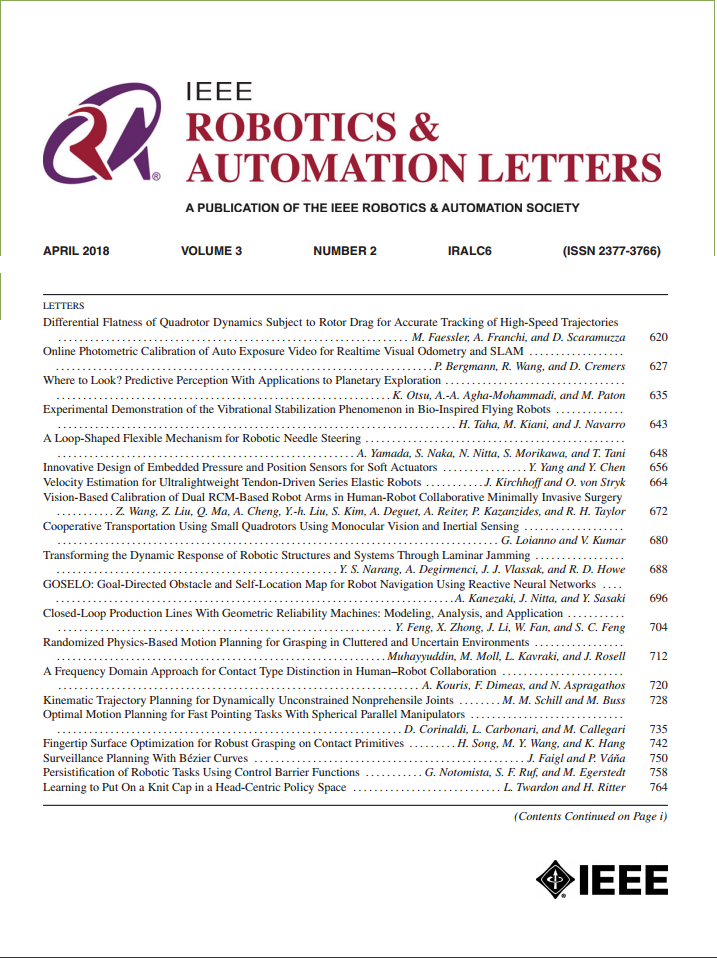NavRL: Learning Safe Flight in Dynamic Environments
IF 4.6
2区 计算机科学
Q2 ROBOTICS
引用次数: 0
Abstract
Safe flight in dynamic environments requires unmanned aerial vehicles (UAVs) to make effective decisions when navigating cluttered spaces with moving obstacles. Traditional approaches often decompose decision-making into hierarchical modules for prediction and planning. Although these handcrafted systems can perform well in specific settings, they might fail if environmental conditions change and often require careful parameter tuning. Additionally, their solutions could be suboptimal due to the use of inaccurate mathematical model assumptions and simplifications aimed at achieving computational efficiency. To overcome these limitations, this letter introduces the NavRL framework, a deep reinforcement learning-based navigation method built on the Proximal Policy Optimization (PPO) algorithm. NavRL utilizes our carefully designed state and action representations, allowing the learned policy to make safe decisions in the presence of both static and dynamic obstacles, with zero-shot transfer from simulation to real-world flight. Furthermore, the proposed method adopts a simple but effective safety shield for the trained policy, inspired by the concept of velocity obstacles, to mitigate potential failures associated with the black-box nature of neural networks. To accelerate the convergence, we implement the training pipeline using NVIDIA Isaac Sim, enabling parallel training with thousands of quadcopters. Simulation and physical experiments show that our method ensures safe navigation in dynamic environments and results in the fewest collisions compared to benchmarks.求助全文
约1分钟内获得全文
求助全文
来源期刊

IEEE Robotics and Automation Letters
Computer Science-Computer Science Applications
CiteScore
9.60
自引率
15.40%
发文量
1428
期刊介绍:
The scope of this journal is to publish peer-reviewed articles that provide a timely and concise account of innovative research ideas and application results, reporting significant theoretical findings and application case studies in areas of robotics and automation.
 求助内容:
求助内容: 应助结果提醒方式:
应助结果提醒方式:


